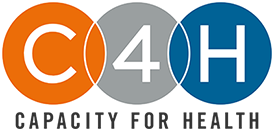Pre-exposure prophylaxis, or PrEP, has proven to be an effective way to prevent HIV infection. The method was introduced in 2012, when the FDA approved the drug Truvada — which blocks an enzyme that allows HIV to replicate itself within the body — for preventative use. Since then, multiple studies have found that consistent, daily PrEP use reduces the risk of infection by 92 to 99 percent in HIV-negative individuals who have an increased risk of infection.
Given this method’s effectiveness in preventing HIV infection, the federal government developed guidelines to improve access to PrEP. Known as the HIV PrEP Framework, this model helps agencies and organizations to promote PrEP as a prevention strategy. Read on to learn the basics of these HIV guidelines.
What is the HIV PrEP Framework?
When taken daily and consistently, PrEP has proven to be an effective prevention strategy. As such, the National HIV/AIDS strategy recognized a need to promote PrEP across agencies, to increase access for those who need and use the regimen, and to advocate for medication adherence support programs. Overall, the strategy’s goal is to increase the number of people using PrEP by 500 percent, from just over 9,300 users in 2014 to 56,250 users by 2020.
To achieve this goal, the strategy developed the HIV PrEP Framework. The framework serves as a model, highlighting which actions federal agencies are currently taking and which steps still need to happen. The focus is to “improve the awareness, use and monitoring of PrEP” in order to reduce new HIV infections.
The Framework consists of seven components, each detailing an element of the federal government’s response. Elements include:
- Providing guidance on policy, programming and practice guidelines
- Communicating with the general public and with individuals at increased risk of acquiring or transmitting HIV
- Offering training and technical assistance to health care providers, grant recipients and others
- Developing programs that increase access and improve adherence
- Evaluating and monitoring efforts
- Researching methods and treatments
- Financing PrEP programs
Why is the Framework So Important?
The Framework identifies the activities and roles of various agencies, making them easier to describe. So far, the Framework has identified over 60 activities related to the seven elements, from medication and clinical services to readiness and adherence programs. When these activities are placed within the framework, it’s much easier to discover potential for collaboration, as well as identify duplicate efforts, thus increasing efficiency.
Significantly, the Framework also allows for potential gaps to be identified and addressed. When current PrEP activities are classified into the seven-element framework, the following areas that need improvement stand out:
- Increase training so providers can better screen and engage those who may benefit from PrEP
- Expand navigation services
- Address race/ethnicity and age disparities
- Increase the number of effective, approved PrEP formulas, such as generic medications
- Address cost barriers
- Assess if PrEP should be considered a covered preventative service
- Identify evidence-based models and best-practices
Where do Healthcare and HIV/AIDS Focused Nonprofits Fit In?
How can healthcare organizations and nonprofits specializing in HIV/AIDS care best utilize the Framework? Several government agencies offer PrEP-related resources.
The Centers for Disease Control provide resources for clinicians, including a consultation line, PrEP toolkits and continuing education programs. Grants may also be available for clinical care organizations, healthcare providers and community-based organizations.
The HRSA’s National AIDS Strategy for 2020 includes PrEP among its four areas of critical focus. Many other agencies, such as DOD, the VA and SAMHSA, offer PrEP resources.
You work to build healthier communities — and we work to build your capacity. through education, training, technical assistance and more, we’ll help you grow your skills, knowledge and confidence so you can achieve your goals. Contact us to learn how Capacity 4 Health can help your nonprofit!




